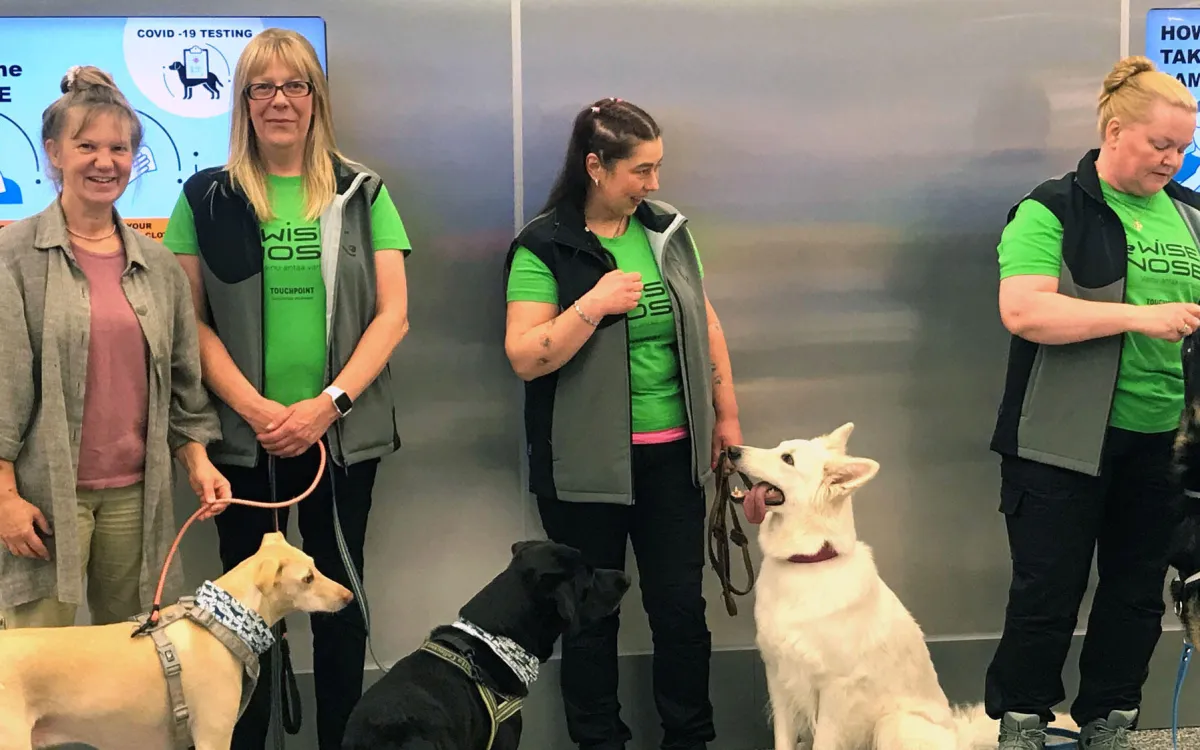A study published in the open journal BMJ global health on May 16 found that trained sniffer dogs can accurately detect airport passengers infected with sars-cov-2 (the virus that causes covid-19) According to the researchers, this form of testing can be very important, not only in the early stages of a pandemic, when other resources may not be available, but also in helping control an ongoing pandemic.

Dogs have an extremely keen sense of smell and can capture odors as low as one trillion, far more than any existing mechanical technology. It is believed that they can detect unique volatile organic compounds released during various metabolic processes in the body, including those produced by bacterial, viral and parasitic infections.
Preliminary data suggest that dogs can be trained within a few weeks to detect samples from patients infected with covid-19 with an accuracy comparable to that of standard PCR nasopharyngeal swab tests.
Although promising, these laboratory data results need to be replicated under real-life conditions. Therefore, the researchers trained four dogs to sniff out sars-cov-2 in the spring of 2020. Each dog was previously trained to sniff out illegal drugs or dangerous goods or cancer.
To test the dogs' detection skills, 420 volunteers each provided four swab samples. Four dogs sniffed the skin samples of 114 volunteers who tested positive for sars-cov-2 in PCR swab test and 306 volunteers who tested negative for sars-cov-2. In seven trials, these samples were randomly provided to each dog.
In general, the diagnostic accuracy of all smelling samples is 92%: comprehensive sensitivity - the accuracy of detecting infected persons is 92%, and comprehensive specificity - the accuracy of detecting non infected persons is 91%.
The researchers saw only slight differences between dogs: the best performance was 93% sensitivity and 95% specificity; The worst performance was 88% sensitivity and 90% specificity.
About 28 positive samples came from people without any symptoms. This means that the dog was not correctly identified as having a slightly higher than 89% of the symptoms, which means that only one of the two samples was not correctly identified as positive.
Then, the four dogs sniffed 303 inbound passengers at Helsinki vanta International Airport in Finland from September 2020 to April 2021. PCR swabs were also tested for each passenger.
Of the 303 real samples, 296 (98%) matched the PCR and sniffing results. In 296 (99%) of the 300 PCR negative swab tests, the sniffer dog correctly identified the samples as negative and 3 PCR positive cases as negative.
After reassessment with clinical and serological data, one was determined to be negative for sars-cov-2, one was positive for sars-cov-2, and one may be positive for PCR test after infection.
Similarly, dogs indicated that four PCR negative cases were positive. These were judged to be sars-cov-2 negative.
Due to the relatively low prevalence of sars-cov-2 among airport passengers (less than 0.5%), 155 samples of people who tested positive for PCR swabs were also submitted to dogs. Dogs correctly identified nearly 99% of the samples as positive. If these samples were included in real-life studies, the performance of dogs would reach 97% sensitivity and 99% specificity.
Based on these results, the researchers then calculated the true positive predictive value (PPV) and true negative predictive value (NPV), which reflect the population prevalence of sars-cov-2 of 40% and 1%.
For 40% prevalence, they estimated PPV at 88% and NPV at 94.5%. This means that the information provided by dogs increases the chance of detection to about 90%. On the other hand, for a population prevalence of 1%, they estimated a PPV of slightly less than 10% and an NPV of slightly less than 100%.
In both cases, high NPV supports the use of sniffer dogs for screening in order to exclude those who do not need PCR swabs, the researchers said.
They also suggested that "sniffer dogs can be used in places with high incidence of sars-cov-2, such as hospitals (pre screening of patients and staff) and low incidence places, such as airports or ports (pre screening of passengers)." They say this can save a lot of time and resources.
The researchers admit that dogs trained to sniff out other substances may mistakenly identify these substances as sars-cov-2 positive. The storage period required for training and feeding samples may also affect the vitality of volatile organic compounds, they said.
A key finding is that dogs are less successful in correctly identifying alpha variants because they have been trained to detect wild-type viruses. But it just shows how well dogs can distinguish between different odors, the researchers said.
"This observation is significant because it demonstrates the strong discrimination of sniffer dogs. It is obvious that the training sample should cover all epidemiologically relevant variants. Our preliminary observations show that dogs lured with one virus type can be retrained within a few hours to detect its variants."